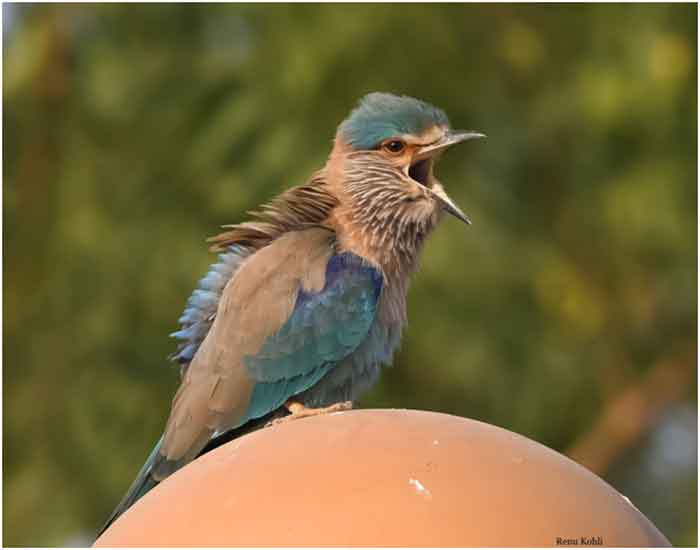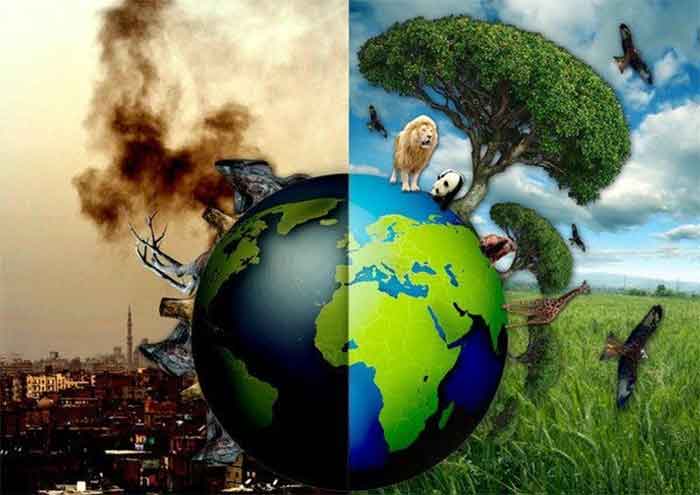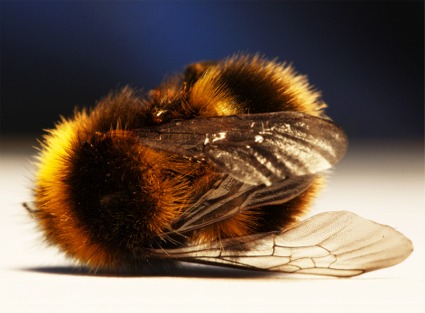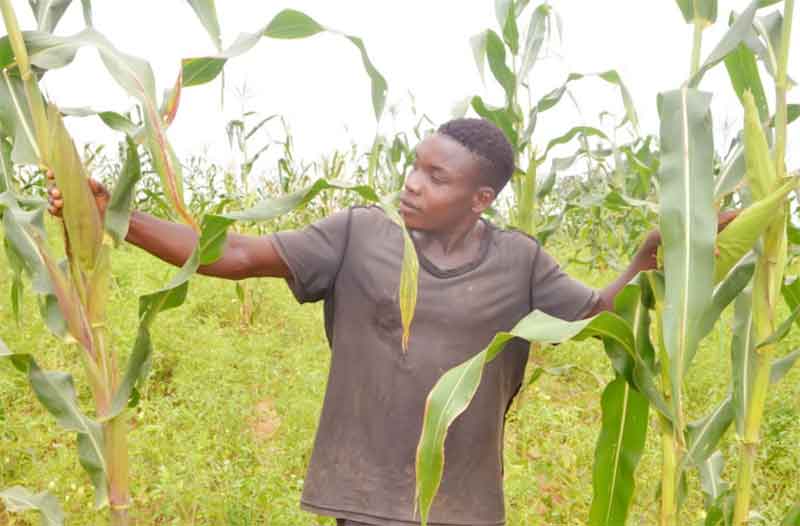![]()
Let us begin with theettam. Or if you prefer, with Leelamma’s kitchen, where thee (fire) burns. Between the wood-burning stove and the community pit-loo, an ecological picaresque unfolds. Perhaps this is why, in Malayalam, theettam (excretum) and thee’tta (food) are near-homonyms.Newcomers to the language, whose ears (and tongues) cannot distinguish between ‘tt and tt (slight upward flick of the tongue at the palate), inadvertently confuse the two.
Thee’tta is primal, natural; unlike bhakshanam, cooked food. Thee’tta is rarely used in human terms, except when you’re lost in the wild and driven to forage like other animals, a pejorative thing.
For naturalists who love scatology and perceive the gifts of bodies to each other as the stuff that really matters; the word theettam is loaded. It is fecal, yes, but inextricable in meaning and substance, from food, thee’tta.
That gustatory pleasures run the show, is no secret where I live: the rainforest.
Capitalists have seduced us into a toxic version of these, through the culture of consumption, running on an overvaunted and dangerous proposition that you can have a planet and eat it too.
~
Interestingly, food comes from foda in old English, also root of the word fodder. Like other animals, humans too feed, digest and defecate, our guts turning fodder into feca.Have you ever wondered where one ends and the other begins? Where, precisely, in your 28 foot-long gut does the food you eat, become the fecum you excrete?
~
Aham annam means ‘I am matter’ in Sanskrit. It is more often translated as “I am food”. Food is matter. I am the food I eat. I matter. As does my excretum, which is in part microbial, and thus alive, and also food to another.
We all matter.
Whether we are matter and spirit, or more matter and less spirit, or spirit disguised as matter, is not the point of this essay. It’s simply that matter, matters. Otherwise we wouldn’t eat, nor would we shit. And the land wouldn’t require our shit, or the shit of other animals.
A point sadly lost to urban humans.
My friend wanted to be with the trees after he died, and for his body to feed them. They’d given him bliss for decades. He wanted to give something back to them; his molecules. I visit those trees often. I imagine his transforming body, now swirling with beings more diverse than I could imagine, telling the roots of the trees, ‘Come, let me feed you, there’s such sweetness here’. The kularmavu, karivetti, kalayam, nyaval and podivari trees arefeasting on him, as are myriad climbers, creepers and smaller plants. In turn I feast upon their beauty and their expirations, redolent with turpinoids and jasminates, and dew-laden air, borne on capillaries from deep within the ground where he was laid down. I remain connected to my friend.
~
Bliss is cool, lightly-scented forest air; bliss is shimmering green, bliss is sap rising and lungs filling, bliss is bodies feeding each other, gifting each other molecules so all may thrive, through an endless feasting.
~
We are replete, when we have feasted. Feast. Fest. Festive. To celebrate, we eat. You cannot have a feast, or a fest, without food, and you cannot have food without the beings of the earth, and death is a manner of feeding. Life begets life begets life. We are all indeed connected.
We all matter.
Composer A. R. Rahman’s love-song Thee, thee thithikkum thee plays on words I’m interested in, Fire, fire, sweet is fire.
I add my own to it.
Thee, thee, theettam, thee;theettam thithikkum thee’tta thee: oh how the keyboard loves these letters.Uncontained, they become rhythmic, purposeful: alchemical.
Thee is a common syllable to both thee’tta and theettam as it is also to theetram (sharpen), and theendam (touch) in Tamil (the old language; precursor to Malayalam).
Homonymns are problematic. Just because two words sound identical, doesn’t mean they were derived from a common ancestral word. We all know that.
Nevertheless.
My Tamil friends and I explore the words further. Theevanam is animal food; theendaraan is [he is] teasing.
Theendamai is untouchable.
~
Word play is fun, especially when it stretches our given truths. If Rahman can conflate fire, love and honey in his song, then surely we can improvise too. Consider this an invitation to reflect uponhow language, ecology, culture and behaviour (etiquette) are borne or destroyed by each other. I offer a sampling of these, filtered through an imagination derived from a few decades in the rainforest, a biome I hold in high esteem.
~
The sweet fire of love. The sweet fire in our bellies, turning food to faeces. The fire in each and every one of our cells, Adenosine Triphosphate (ATP), burning complex molecules to simpler ones, so our cells may eat and excrete.
Are fire, feu (in French), food and feca related?
Is fire alive? Is fire a being? Wilful, capricious, powerful and transforming? Is this why it’s worshipped? Has fire been harnessed to our collective peril, to become the Frankenstein monster in the belly of capitalism? Without fire what industry?
~
Nature unfired is deemed unfit for modern humans. Is this also why humans unfired (by ritual) are deemed untouchable?
~
My ecological mind is stubborn, as is my deviant sense of etiquette.
Inside me, is shit. It follows that I’m untouchable too. Why does another’s handling of my shit, make her untouchable? Surely it’s not the nature of shit per se. Then everyone who bears shit should be cast out. Every body should be excluded. I should cast my own body out. And most of nature should be cast out, for most of nature shits.
~
How does fire, when symbolically used, materially purify? And if it is indeed able to perform this magical act, then why not everyone have equal access to it, shit producers, shit bearers and shit handlers?
Why did some people get excluded from fire rituals?
Had Descartes proposed I eat therefore I am, or, I am, therefore I shit, he might have won over eastern mystics and modern environmentalists, and perhaps even indigenous peoples. As it stands, he served the engine of modern civilization, all because he forgot that to think he needed to eat, and that if he ate, he had to shit.
~
It’s also no secret in the jungle, that everyone’s excretum is someone else’s food, and that the trillions of bacteria, feasting in our guts, exit when nature calls, only to be devoured by some other body.
“Coprophagism” refers to shit eating specifically, and “coprophily” is the love of shit. That nature is wholly “coprophilic” is a point that’s been lost to the modern world.
Every “body” ends up nourishing, in one way or another, some other “body”. Humanure is a gift, not a pollutant. Shunted down pipes or amassed in concentrations beyond what the environment can naturally digest (clean up), it becomes toxic, but as writer Wendell Berry says, it’s the one thing of value humans return to the earth.
Of course the distinction between food and water, nourishment and hydration, mineralisation and aeration are looser in actuality than we make them out to be. Water bodies feed plant bodies which feed animal bodies which feed soil bodies which feed plant bodies, which feed air bodies.
8000 Volatile Organic Chemicals, exudedby plants, make the air a veritable soup, to then enter lungs, rivers, other plants, and so on. Food for thought might be more literal than you think, every breath you inhale physically triggers any number of mentations. Molecules sniffed in, meet cells in your olfactory membrane, to then excite your nerves who then tell your brain what to do. Inspiration comes in part from the co-mingling of molecules, exudate becomes inspirate.
~
My body includes a number of things: air, saliva, sweat, urine, shit, blood, tears, snot, ear wax,salt and other excretions, that part from me as I live. These are the things of value for nature, they are foods for other creatures, many thriving on the landscape of my body, feasting upon me as I write.
Ecology. Animals eating animals, or plants. Plants eating light or decomposed animals or rockdust. Fungi eating plants and animals. Bacteria eating fungi. Everyone drinking water. Everyone giving to the water, the air, the soil and each other. Everyone connected to the biosphere.
Ecological footprints are measured by what we consume (meaning, to take), and what we waste (the discarded products of civilization).
Imagine a planet without waste, only endless forms of feeding.
Sometimes I think of the rainforest as a living Matryoshka doll. I see insertions upon insertions upon insertions, extraordinary degrees of inter-nestling, myriad beings snuggling up inside each other, or upon one another, or under, or over, or intertwined.
Sometimes life here can also feel like a carnival, with crowd behaviourmodulated by a fine sense of etiquette, arrived upon by mutual consent, by the zillions of creatures feeding.
Every space is busy, full of action: bacteria, worms, ants, spiders, trees, epiphyllous liverworts, maggots, eggs, seeds, filaments of fungi: multiplicitous symbionts forming composite entities.
I’ve been learning that our bodies are quite similar, we are but giant Matryoshkas. Far from being single individuals, we are instead fabulous ecologies – researched in the ambitious Human Microbiome project -as consisting of over 10,000 species of tiny organisms who contribute more genes beneficial to our survival than our “own” human cells do.
Each one eating, each one metabolizing, and each one defecating.
~
The longer I live here, the harder I search for a non-living space, I cannot find one! Even if you and I disagree about the consciousness of rocks (wilful beings operating on different time scales, with a rock-mind vastly different from ours), we will both agree that without rocks certain lichens wouldn’t thrive. The rock offers its minerals to the lichens, the lichens are grazed by the snails, the snails are picked by the cormorant, the cormorant is hunted by the eagle, and the eagle, when it dies, is devoured by beetles, rats, worms, vultures and bacteria. And on the feeding goes.
Do you know where you end and where your body begins, or where your feelings end and your flesh begins, or where your ideas end and your actions begin, and where all these end and another person begins, and where we end and the world begins?
Now behold, from excrement’s steamy depths, the Madhu Vidya, or the Honey Doctrine, along with some homegrown delecta and topped by the Amazon – giant forest fired up burger-fashion and served on the global platter; all infused by a die-hard adage as old as the universe itself: everything is connected, as are food, fire, forests and faeces.
~
Iyam prithivi sarvesham bhutanam madhuis only the first line of the Honey Hymn, which goes on for many verses to talk about the sweetness of existence. The earth is (like) honey to all beings, and all beings are (like) honey to the earth. The hymn moves on to fire, air, water, lightning, sun, wind, sky, moon, spirit, humankind, truth and action. Each of these are as honey to all beings, all beings are as honey to each of these.
I’m no fan of the classical cultures. In fact, I’d rather have a forest than a scripture; it seems the two are mutually incompatible, look at the way things have gone with supremacist cultures that claim these thoughts.
however, occasionally, I try to salvage some earth-based wisdom in the old hymns.
Some of them were prescient, they warned of consequence arising from a failure to recognize our interconnectedness: ecological, spiritual, material and immaterial. Some of them urged that the end of nature would be the end of humankind.
~
Writer Derrick Jensen says: “It’s this culture’s behaviour that is killing the planet.” J. Krishnamurti the 20th century sage, said: “Behaviour exposes the content of consciousness.”
A culture that values Big Macs has a different mindbase than one which values forests. What does its behaviour tell us about its consciousness?
What does feasting look like when you want to sustain your environment? Could we have a culture of consumption and a planet too? What kind of a culture would this be, one that gives food and not poison to the earth, and lives within its limits?
What would be its religion? What ethics would guide it?
What art and culture would arise from it?
What etiquette would it practice?
Paniya peoples of the Western Ghats believe that it was the smell of cooked food that enslaved them.
~
Kurchiya peoples (also of the Western Ghats), believe that if you kill an animal and you do not eat him or her, you commit a sin.
~
Think of all the animals killed, exiled, or enslaved for the great civilized enterprise called agriculture (defined here as monocultures serving patriarchal militarized city states).
How many creatures are killed, so we can eat rice? Are vegetarians not non-vegetarians by proxy? How many creatures are driven away or kept out of their homes so we can have sugar, tobacco, soya, or tea? Whom do these serve, other than the industrial economy?
Sometime ago I was sitting on a bench overlooking the stream, when two men strode into a clearing below me, cast their machetes down and two large flatbread-like things. They washed their faces, wiped themselves with a pink towel, to sit down with obvious eagerness to do eat.
I called out, as I knew one of them, Babu, a young Kurchiyan. I didn’t want them to be embarrassed by me. We chatted about elephants, wild boar, their health, my health, their parents’ health, my parent’s health, the dogs, the rain, the otters and so on.
They asked if we’d bought honey from our Paniya neighbours. We hadn’t.
Then Babu asked if I wanted some. I wasn’t sure what he meant and asked if he was selling honey. He pointed to the flat round objects and said, “No, here’s some.”
They’d just harvested two Apis cerana combs from a hollow in a tree.
I thanked them and declined. Besides I was on a little cliff of sorts and couldn’t get to them. Then we fell silent. I looked out for the brown fish owl.
“I come here every day to meet the veliya moonga, but he’s not around”, I said.
They mentioned they had just seen him fly downstream.
Babu urged: “Why don’t you have some honey, it’s good for you. Ingotta va. Come.” I really didn’t want to split their wild delicacy, and declined again saying I had a stomach infection.
He quipped, “Nalla marunnu. It’s medicinal, you should have some.”
I replied, “I’m feverish, I don’t want to walk through the stream.”
After this we fell silent. They sat there talking. I sat on the hillbench enjoying the afternoon light through the trees.
Then suddenly, Babu split some comb, got up and told me to walk to further downstream. He would leave it for me on a stone.
Clearly they wouldn’t eat so long as I was present. I was being polite not wanting to be rude by leaving. They didn’t want to be rude by eating in my presence. I’d been keeping them from their lunch.
So I walked to the stone at the crossing, and found a Colocasia leaf with three pieces of comb heavy with honey, larvae and bright orange pollen.
I walked back. They noted my weakness and added, “eat the honey, it’s good for you.”
I sat on the bench on the cliff, and they sat on the grassy verge across the stream,. We ate the honeycombs with relish, feasting together in a moment of neighbourly etiquette.
~
Adivasi peoplestread lightly, even when they feast. I received a note from a friend the other day, a researcher in a nearby mountain range. We’d been talking about different forest feasts. She wrote: ‘The Soliga tribe feast on honey, especially that of the smaller bees, Apis mellifera (“tuduve jenu”) and Apis florea (“kaddi jenu”); Dioscoreatubers;Zizyphus and Syzigiumfruit andmushrooms.They have an onomatopoeic word for the sound produced while plucking mushrooms: “motoko-motoko”. And one for the sound made while eating roasted tubers: “kau-kau”. The Soliga also say that elephants love to feast on Grewia tilaefolia, Helictores isora and Kydia calycina bark.And of course, all the red flowers of Erythrina,Bombax and Butea treesin the “spring”, provide feasts for birds and squirrels.’
~
On a different note: a couple of years ago, when the onion prices rocketed, I was chatting with my friend Janu, of the Adiya tribe.
I said: “Jan-jan, we’re going to have to live on just rice and pickle soon. Thank goodness we have a padi field but for us all to live from that, we’ll have to eat once a day, not three times”. She said: “What’s the big deal? that’s how we eat at home”. Then she went on to include fish, crabs, tubers, mushrooms and wild ferns.
Later, while walking around the land I thought: we can eat bush spinach (leaves of various shrubs, herbs and trees), Dioscorea and Colocasia tubers, 5 or more species of wild mushrooms, and jackfruits, green and ripe, and jackfruit seeds, and Ainili fruit and seeds, and mango. Since we have cows, dairy protein is not an issue. With their manure, we can continue small-scale cultivation. We can also plant more perennial chilly (and eat leaves of some of the varieties), and we can cook the native perennial chundakka.There’s pumpkin,chowchow, amaranth and various spices. So long as the monsoon brings rain, water won’ t be an issue. Because we’ve regrown the forest, there are natural springs still flowing.
My biggest dietary worry (for when things get really bad) is whether I’ll be able to eat larvae and snails. Sometimes, I bump into small bands of Paniya people, and watch them catch fish with their baskets and pick up freshwater molluscs. A Paniya friend taught me how to catch crabs many years ago.
I often think about diet because when the oil prices hit the roof, we too will be hit if we are dependent on transport for our staple food items. Then we’ll all think and behave very differently with respect to food, and also each other.
Surely, we’ll practice another kind of etiquette.
Vivencia, the Portuguese word for “living experience”, the thing that courses through your blood, unworded but felt, unanalysed but cherished, unstated but full of portent and meaning, and ripe with emotion and feelings.
I have rarely felt as depressed as I did on that day in Brazil in the state of Matto Grosso, when we travelled through Governor Blairo Maggi’s ripped open bare expanse of dead earth, where cerrado forest stood a couple of years before, as my friends recounted how one man had caused the wreckage of an ecosystem, as the shimmering heat rose from the “new desert”. In the distance, the metallic glint of silos, just specks on the horizon, and meanwhile the land around us for miles dessicated, brown, dead, brown, dead, brown….dead…..dust in the wind, to be swept off to Africa perhaps, to return some of the Saharan dust that reaches South America on high winds, originating in desertification there. I felt sick to the core that day, all this for cattle-food, and the cattle for Big Macs.
Later on that same day, we gorged ourselves on ice creams made from wild fruit, at a little shop that had as its proud claim: 40 cerrado flavours for sale. I have rarely been so delighted by ice cream, made from strange new fruit, each flavour tantalizing, each surprising.
~
My travels in Brazil bore witness to the relentless massacre of the Amazon rainforest, the planet’s largest remaining expanse of old growth forest, a crucial link in the looming tragedy of eco-collapse. What appeared was a litany of consequence.
Every day 1000 or 2000 hectares go down. All it takes is 45-ton tractors with a heavy chain slung between.
Every bit that is burnt or felled, means not only the loss of an ancient biome but also the dangerous disruption of planetary-scale wind and water cycles that are “driven” by this gigantic heart.
Every bit that is burnt and cut means a desert is being rapidly formed, and that the Amazon could be like the Sahara within our lifetimes.
Every bit that is cut, burnt and planted to soya and then laid bare to be blown away in the “fallow” period, is closer to the collapse of the forest, and the end of the biosphere.
Every bit that is flattened, cut and burnt, then planted to soya, or grazed by millions of head of cattle (breeds originating in India or Africa) is land held ransom while being forcibly exposed to the searing heat of the tropical sun full blast, forcibly prevented from recovery.
Every bit of the Amazon cerrado, cerradon or tall terra firme forest, or campinarana or campina forest that is being cut, cleared, burnt, planted with eucalyptus, rubber, soya, sugarcane or being grazed by millions of heads of cattle is catastrophe waiting to happen, anytime. Decrease in rainfall, change in seasons, more storms, less water infiltration, toxic run off, new diseases: the same slew of compounded colliding factors.
Every bit of any of these primary stands of vegetation that are being cut, cleared, burnt, planted, grazed, mined for gold, coal, garnet, bauxite, oil, uranium, is the end of 100 million years of sentient communal living, of a supremely sophisticated web of millions and millions of living beings: for the rainforest is the oldest continual biome on the planet.
Every bit of this stupendously ancient and intricately intertwined giant web, that is today being further opened to roads, highways, dams, new towns, resettlement sites, resorts, hotels, bungee jumping, transport, development in any form whatsoever, is a harbinger of doom.
~
Etiqutte is behaviour. Behaviour exposes the content of consciousness. It’s this culture’s behaviour that is killing the planet. What does this say about its consciousness?
It’s too bad that neither Descartes, nor any of the Enlightenment philosophers knew the Madhu Vidya, whose first truth is that the inter-relationships between the elements and individual beings are like the connection between honey and bees, and whose hidden meaning is about cause and effect, in other words (ecological) consequence. That there is no supreme transcendent god, but only a consciousness inseparable from the creatures that flows honey-like between them, and all are honey-like to each other. That matter and breath too, are honey-like to each other.
The Madhu Vidya is a most delectable text, and the very essence of ecology, of the gifts that flow from one being to another, of energy, minerals, water, airand so on, and how, these areinseparable from consciousness. The Honey Hymn talks of how this flow is not only immaterial, but utterly material, leading to forms which lead to more forms, and all are like honey to each other.
How can such a delicious hymn precede the eugenical practices that created a living hell for millions of humans over centuries?
Perhaps that arose with the growth of city states, of civilization.
The pogrom against the wild coincided with larger concentrations of humans; it required the conversion of forests to fields, estranged humans from other beings and wild processes, and also from each other, enslaving the majority while elevating a few.
Shit became a problem, large animals (as humans are) shit a lot, and urban areas became foul. Shit became waste, a pollutant, no longer good. Shit became foul, spreading disease, to be removed.
And thus, a shit cleaning caste was probably invented.
That shit was as honey to somebody, and that that somebody was as honey to somebody else turned on its head. The connection was broken. Then followed by systematic misdirection through worshipping symbol and not the wild, ritual and not relations, artifact and not nature, mantras and not bodies.
~
It’s clear that the patriarchal imperative renders all of life as untouchable. Nature, it seems, is the ultimate outcast.
Consequence? Planetary scale disaster, for ignoring all the signs that came before.
From Leelamma’s kitchen I walk to the community pit loo and back, thee’tta-theettam, thee’tta, thee.
Past the wild bees, past the forest trees, past the raucous flocks of different birds and the cows feasting free, past the orchard and the stream, past the padi fields. Such fecundity.
The fire of life burns sweet in this part wild place.Iyam agni sarvesham bhutana madhu. Fire is as honey to all beings. (And all beings are as honey to fire).
I find Leelamma collecting some ash for the fields from the woodfired stove. Idam manushyam sarvesham bhutanam madhu. Humankind is as honey to all beings. (And all beings are as honey to humans).
I feel the cool wind through the forest, grace my cheek. Iyam vayu sarvesham bhutanam madhu. Wind is as honey to all beings. (And all beings are as honey to the wind).
The trail is soft with fallen leaves, under my feet. Iyam prithivi sarvesham bhutanam madhu. The earth is as honey to all beings. (And all beings are as honey to the earth).
I watch the full orange moon rise in the east. Iyam chandre sarvesham bhutanam madhu. The moon is as honey to all beings. (And all beings are as honey to the moon).
~
It’s time to offer our sweetness to the earth. It’s time to dismantle industrial civilization.














































